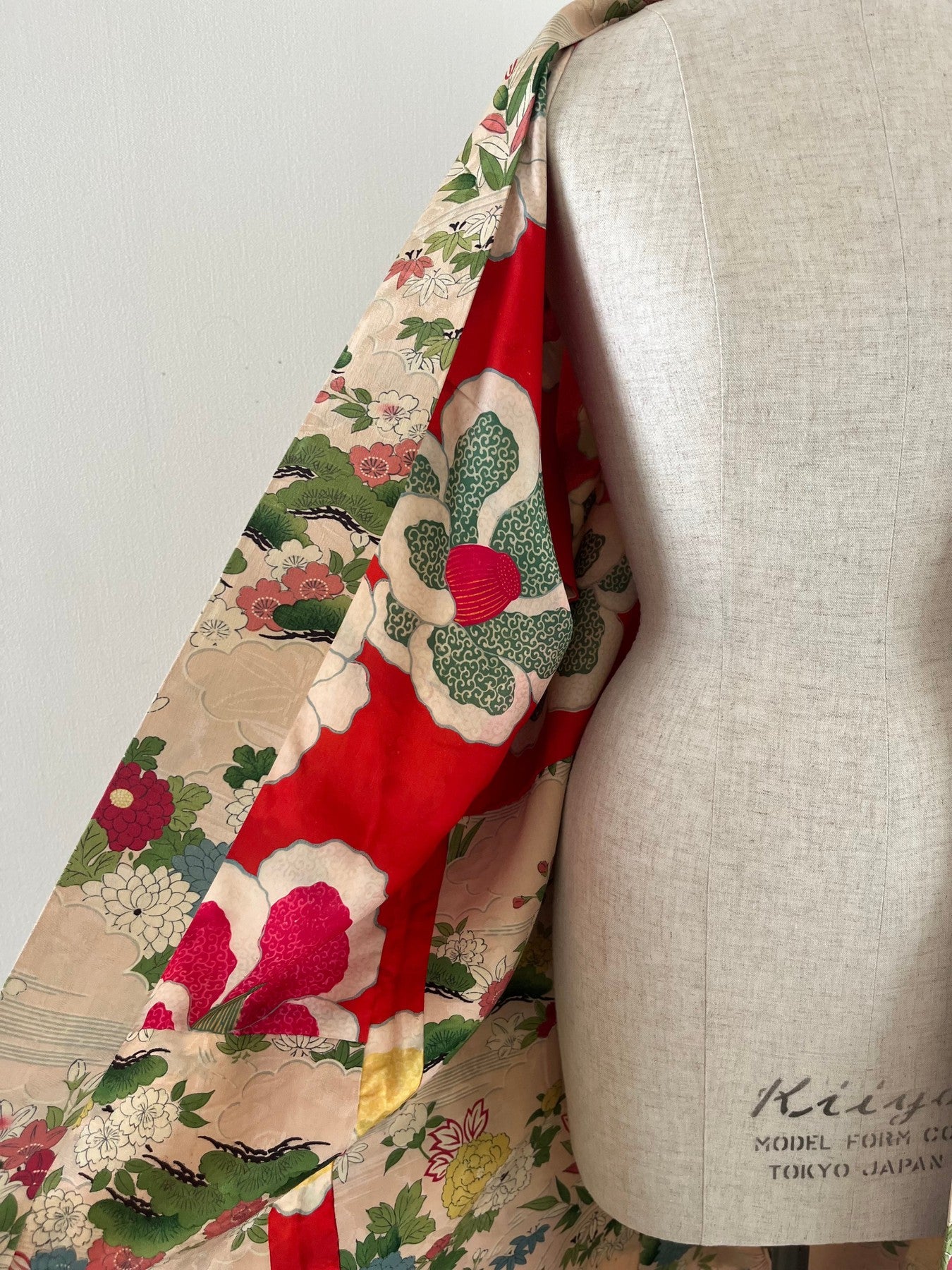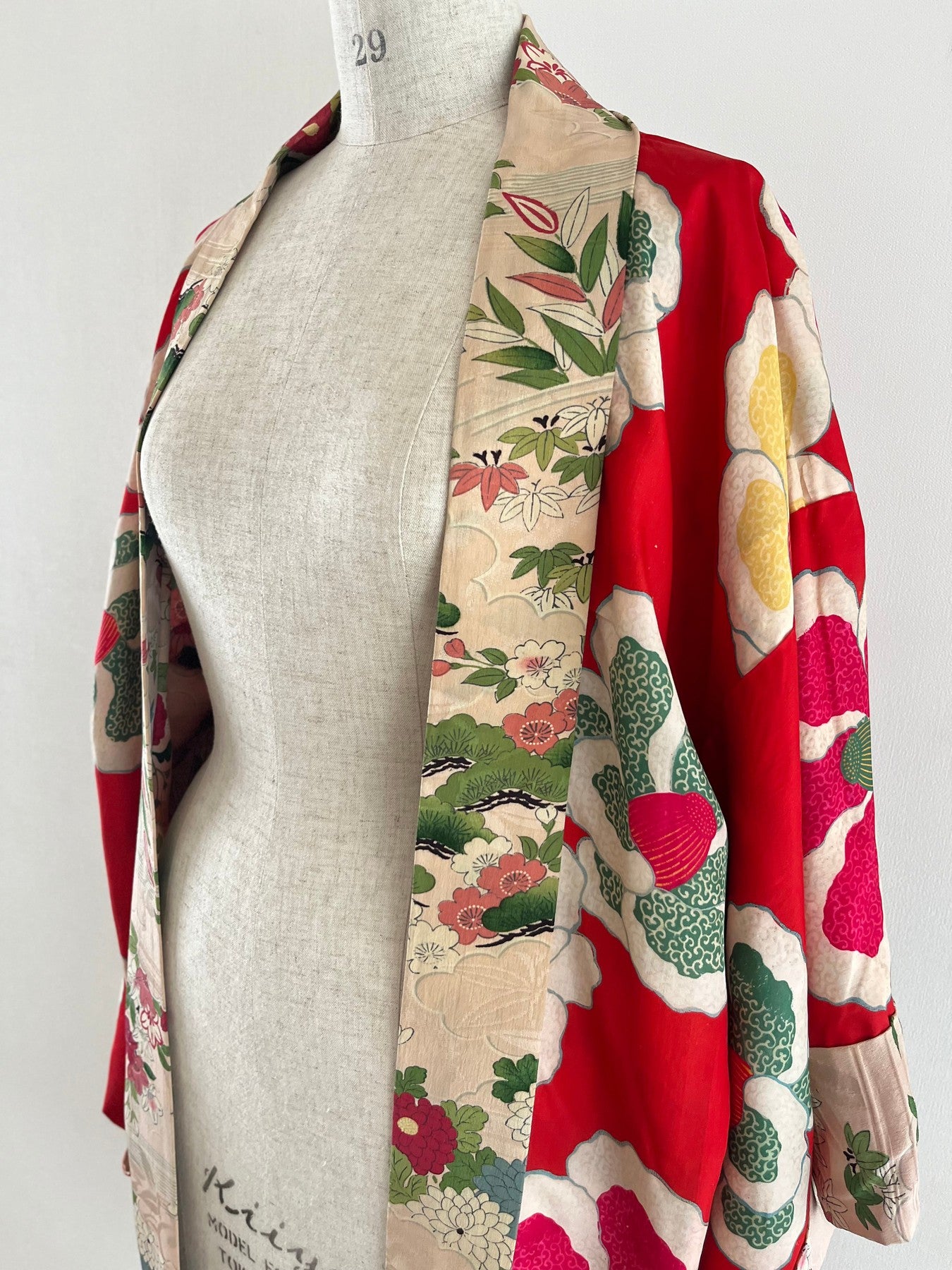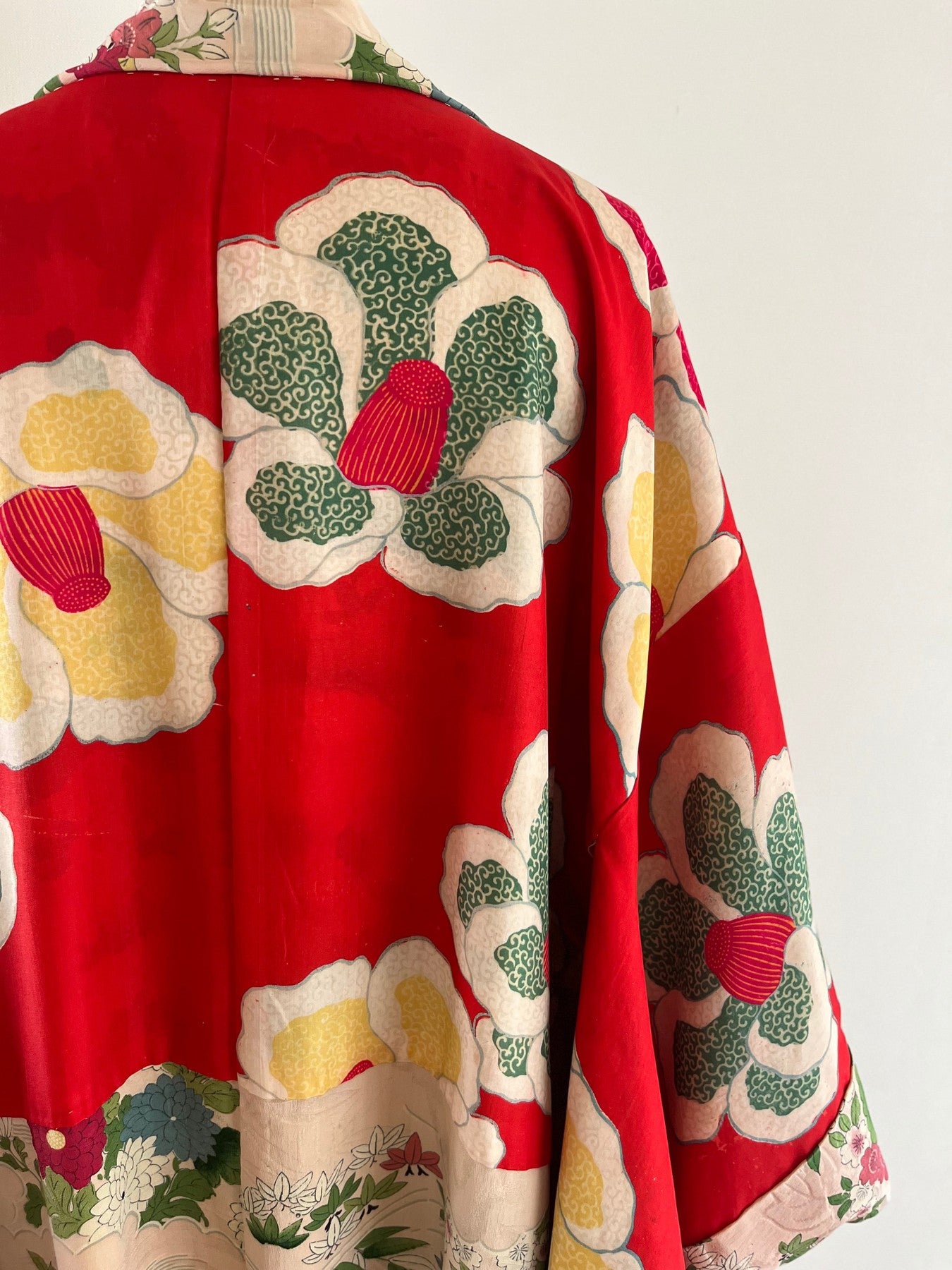1
/
of
16
Soft Pink Floral Haori
Soft Pink Floral Haori
Regular price
€860
Regular price
Sale price
€860
Unit price
/
per
Couldn't load pickup availability
This haori features pine trees, cherry blossoms, peonies, bamboo leaves and bellflowers hand stencil dyed on a fabric woven with a pattern.
Circa 1920-1940s
Japanese silk
Hand sewn
Measurements
Length (collar bottom to hem): 97cm
Width (pit to pit): 60cm
Collar center to sleeve end: 64cm
€860
































